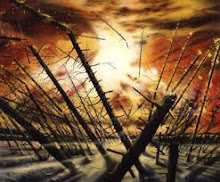Any sound generated by a meteor in the upper atmosphere, such as a sonic boom, should not be heard until many seconds after the meteor disappeared. However, in certain instances, for example during the Leonid meteor shower of 2001, several people reported sounds described as "crackling", "swishing", or "hissing" occurring at the same instant as a meteor flare. Similar sounds have also been reported during intense displays of Earth's auroras.
Sound recordings made under controlled conditions in Mongolia in 1998 by a team led by Slaven Garaj, a physicist at the Swiss Federal Institute of Technology at Lausanne, support the contention that the sounds are real.
How these sounds could be generated, assuming they are in fact real, remains something of a mystery. It has been hypothesized by some scientists at NASA that the turbulent ionized wake of a meteor interacts with the magnetic field of the Earth, generating pulses of radio waves. As the trail dissipates, megawatts of electromagnetic energy could be released, with a peak in the power spectrum at audio frequencies. Physical vibrations induced by the electromagnetic impulses would then be heard if they are powerful enough to make grasses, plants, eyeglass frames, and other conductive materials vibrate. This proposed mechanism, although proven to be plausible by laboratory work, remains unsupported by corresponding measurements in the field.




No comments:
Post a Comment